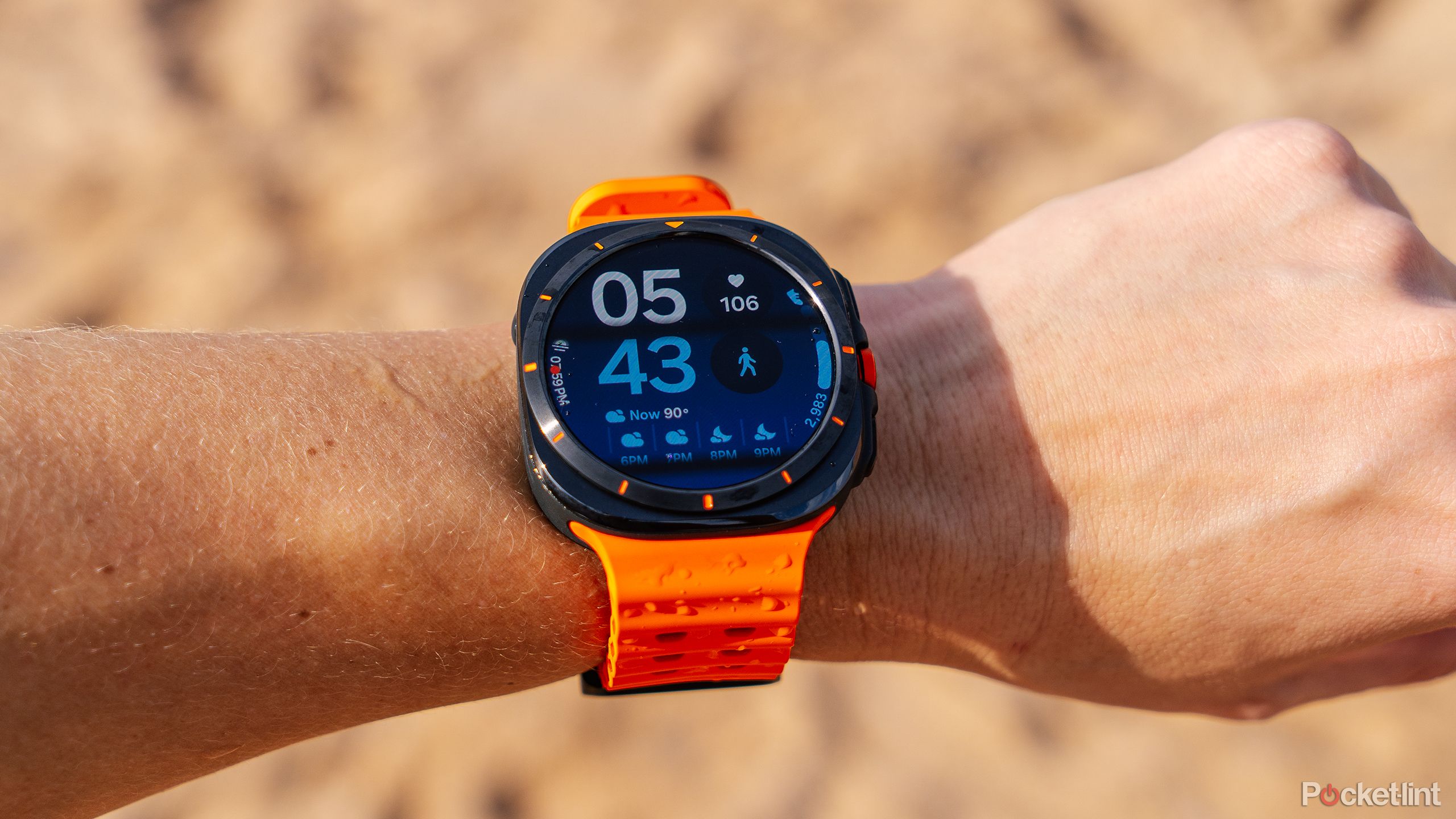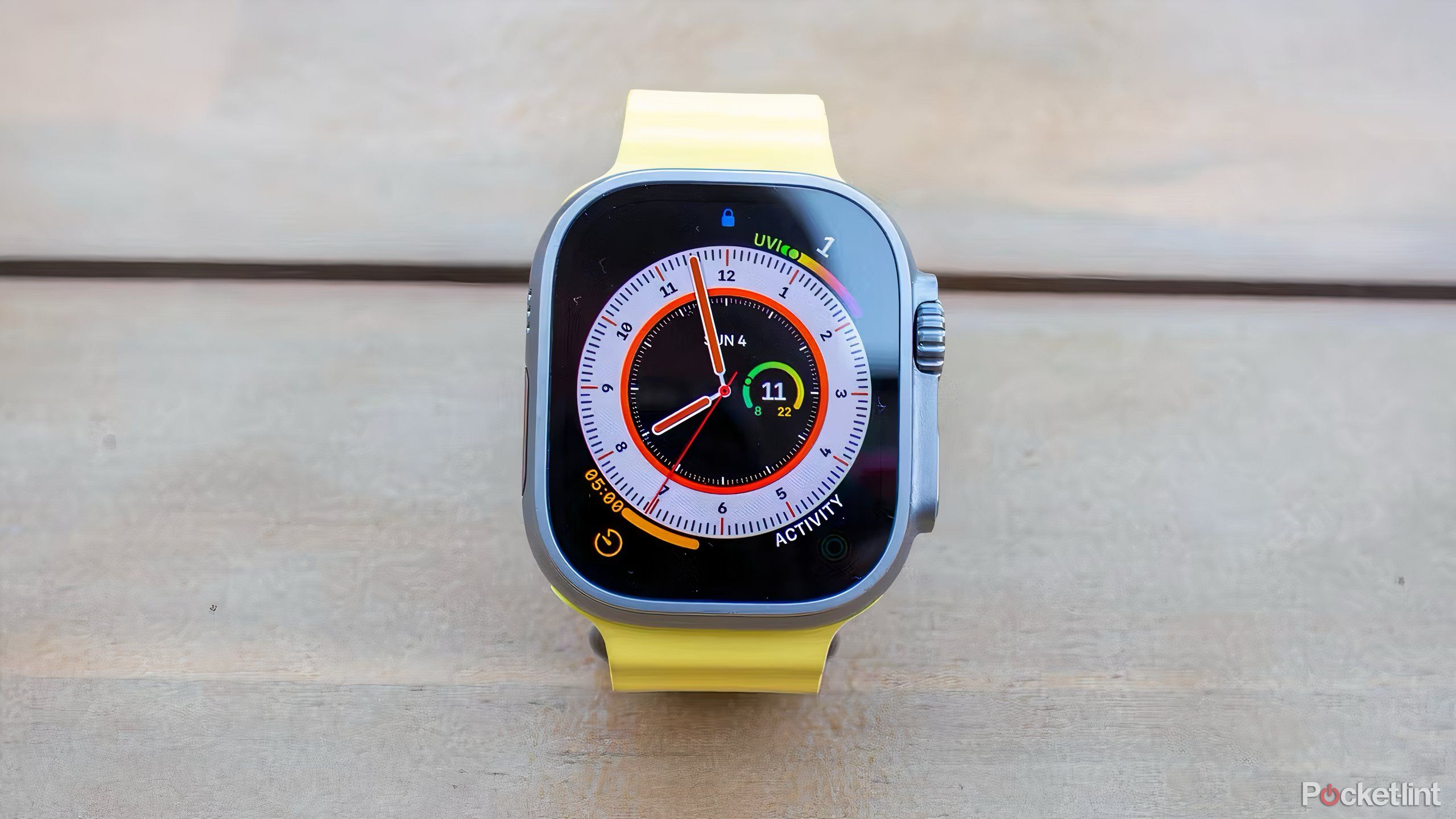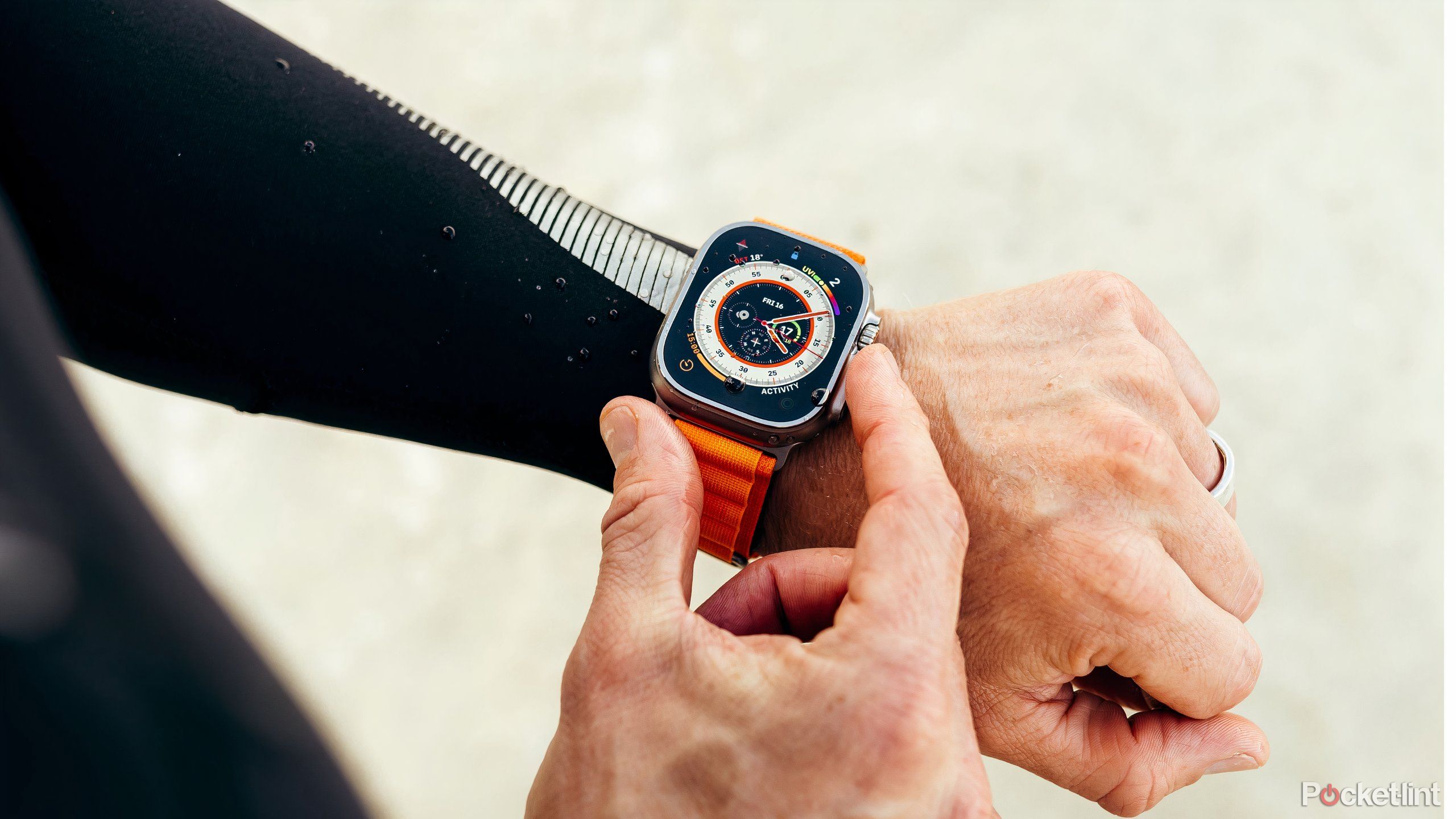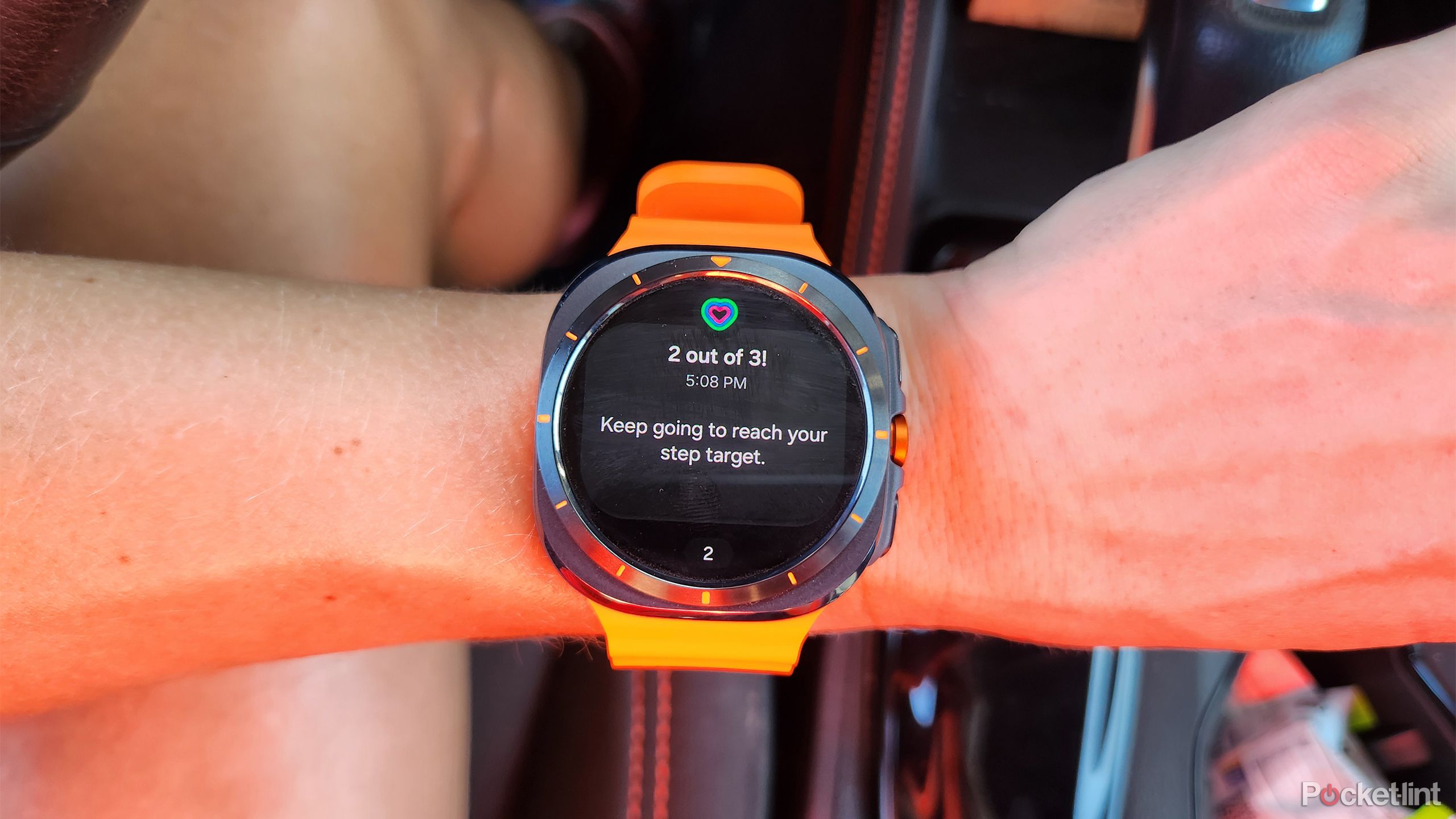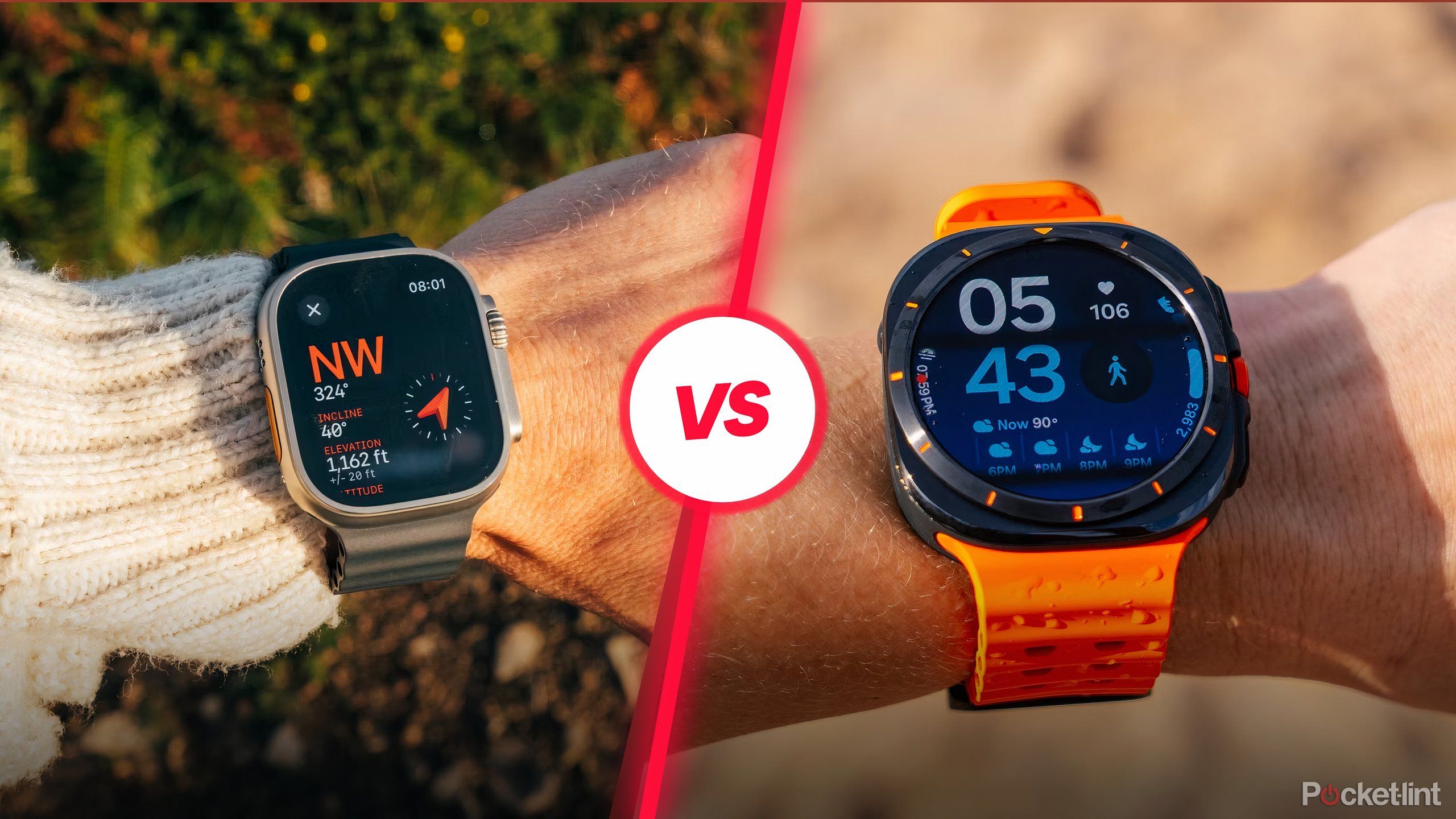
-
Best overall pick
Apple Watch Ultra 2
The Apple Watch Ultra 2 is Apple’s most premium smartwatch, and the best “Ultra” option out there, with a larger, brighter screen, longer battery life, and a new black titanium finish.
Pros- Brigth screen imrpoves visibility
- Gesture controls are handy
- Running Siri locally is mroe efficient
Cons- Battery life is unchanged fromprevious model
- Other watches are better at navigation
-
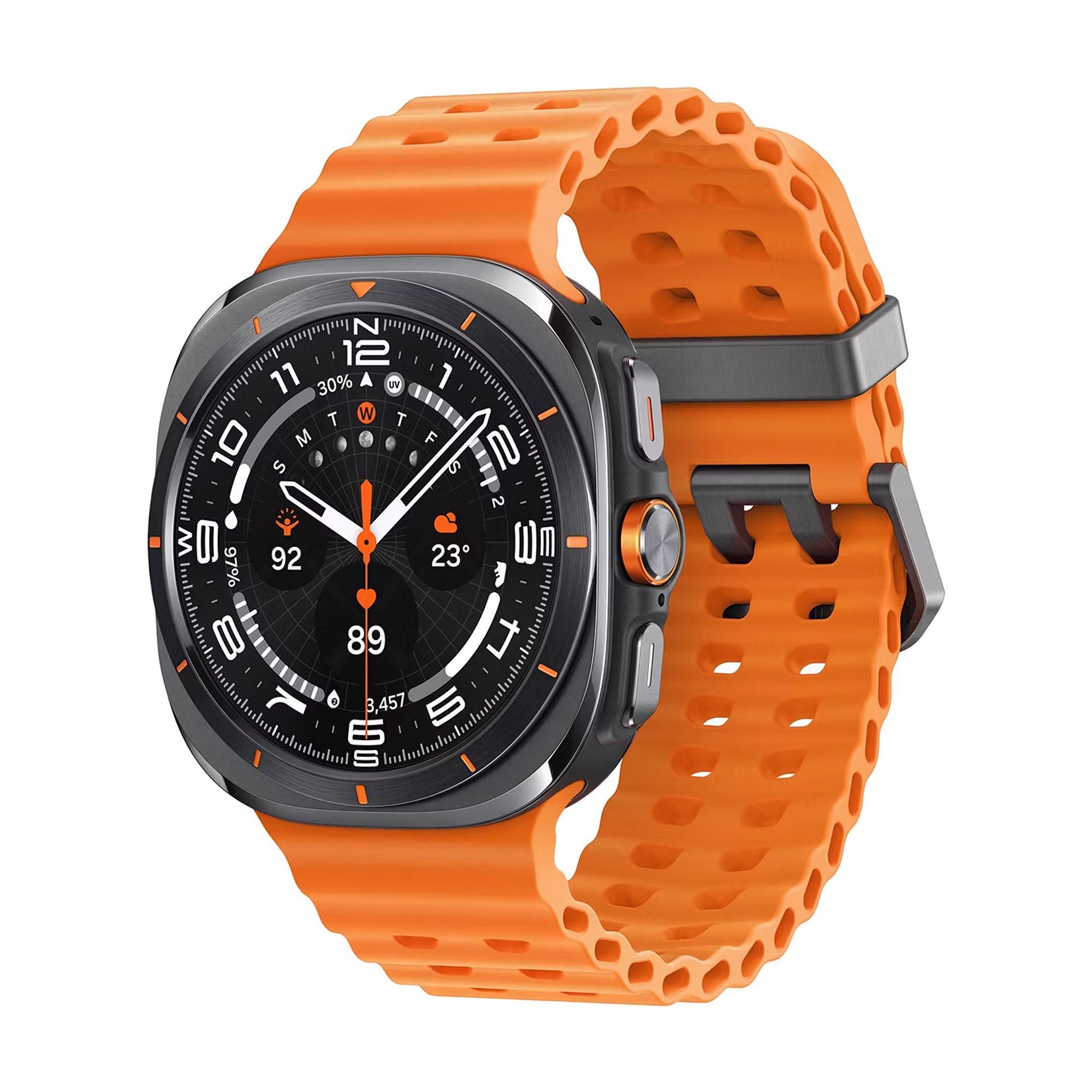
A solid rugged alternative
Samsung Galaxy Watch Ultra
The Samsung Galaxy Watch Ultra is a more rugged take on the company’s smartwatch, with a bulky titanium body, and a more limited shortcut button.
Pros- Bright and responsive screen
- Accurate heart rate data
- More health feature than the competition
Cons- Too bulky
- Battery life could be longer
The average smartwatch does the job for most people. Whether you’re rocking an Apple Watch Series 9, eyeing a Series 10, satisfied with a Pixel Watch 3, or in it for the long haul with the Galaxy Watch 7, you’re going to get a consistent health tracking and battery life experience from all of these devices. An “Ultra” smartwatch is for the smaller sliver of athletes and smartwatch fans who need more.
The Apple Watch Ultra 2 was announced in 2023 with a brighter screen, faster S9 SiP (system in a package), and the same specialized outdoor activity tracking like the Depth app used for diving. Apple is confident enough in the capabilities of the Ultra 2 that rather than update the device alongside the announcement of the Apple Watch Series 10, it instead released a new black titanium finish and called it a day. The Samsung Galaxy Watch Ultra, in contrast, is a newer addition to Samsung’s lineup, a successor to the “Pro” model it had released in the past, with a similar focus on offering a larger screen and easy access to fitness features, like Apple’s watch.
Because the watches run on different operating systems, it’s hard to make an apple to apples comparison between the two, but if you’re considering exploring a new smartwatch ecosystem, looking at things like the design, software, and health features of the Apple Watch Ultra 2 and the Galaxy Watch Ultra does put one wearable on top.
Price, availability, and specs
You’ll pay a premium for a bigger screen
Both the Apple Watch Ultra 2 and Samsung Galaxy Watch Ultra are available to purchase now from all the usual suspects, including Amazon, Best Buy, and directly from their respective manufacturers. The Apple Watch Ultra 2 launched on Sept. 22nd, 2023 for a starting price of $799, though you can boost it up to thousands of dollars with the right selection of watch band. The original Ultra 2 was only available in a natural titanium finish, with a new black titanium option available If you’re looking to purchase a black titanium Apple Watch Ultra 2, however, it’s only available to pre-order until it officially launches on Sept. 20th.
The Samsung Galaxy Watch Ultra launched on July 19th, 2024 for $649.99, with multiple different Ultra-focused band options. Samsung sells the premium smartwatch in titanium gray, white, and silver finishes, and much like Apple, only offers a cellular version of Galaxy Watch Ultra, skipping a cheaper Bluetooth-only model entirely.
In terms of basic specs, the watches have some key similarities, including having case sizes over 45mm (in the case of the Apple Watch Ultra 2 its 49mm, the Galaxy Watch Ultra is 47mm), and weighing more than 50 grams (the Apple Watch Ultra 2 is 61.3g, the Galaxy Watch Ultra is 60.5g). These are big, thick watches, with larger batteries, faster chips, and screens that give you more room for watch faces and health metrics. They’re not discreet, and for most people they’ll likely be overkill. Here’s how the rest of the specs compare.
-
Apple Watch Ultra 2 Samsung Galaxy Watch Ultra Brand Apple Samsung Heart Rate Monitor Electrical and optical Yes Color Screen 3000nits Yes Battery Life Up to 72 hours Up to 100 hours Operating System WatchOS Wear OS 5 Lens Material Sapphire Sapphire crystal Case Material Titanium Titanium Case size 49mm 47mm Display 1,185 sq mm, 410×502 pixel resolution, 3000 nits 49mm 480 x 480 Super AMOLED Connectivity GPS & Cellular Wi-Fi, Bluetooth, LTE Software watchOS 10 Wear OS 5 Health sensors Body temperature, Blood oxygen, Optical heart rate, Electrical heart rate, 86dB siren, Depth Gauge Accelerometer, ambient light sensor, barometer, compass, gyro sensor, temperature sensor Dimensions 49 x 44 x 14.4mm 47.4 x 47.1 x 12.1 mm Weight 61.3g 60.5 g Mobile payments Apple Pay Yes Color options Natural Titanium Titanium gray, titanium silver, titanium white,
Boxy design and rugged build quality
Apple and Samsung are offering more room for your apps
In terms of the design, the nicest thing you can say about the Apple Watch Ultra 2 is that it’s opinionated. Apple created a premium smartwatch that takes up more space, has an easily recognizable silhouette, and adopts more elements of classic watch design like a crown guard.
Making a bigger watch body means that the display of the Apple Watch Ultra 2 is more expansive than what you can get on most smartwatches at around 1.9-inches, which translates to more information or text onscreen at once, and watch faces that have more complications. When you add in the other extras the Ultra 2 has built-in, like a depth gauge, water temperature sensor, improved GPS, and screen brightness that can reach 3,000 nits, it’s easy to see why some people are able to get over its more polarizing design. It’s a bit awkward-looking, as we found in our review, but it’s capable of more in exchange.
On the other hand, the Samsung Galaxy Watch Ultra is clearly inspired by Apple’s high-end smartwatch. The switch to titanium, the boxier shape, the Quick Button for launching apps, and even the colorful orange watch bands for water sports and hiking, all suggest that Samsung had the look of Apple’s watch in mind when it created its new take on a pro smartwatch. The smaller 1.5-inch display on the Galaxy Watch Ultra can also reach up to 3000 nits of brightness, but it feels more cramped because of the decision to place a round display with a bezel inside a larger square-shaped body. While both watches designs won’t be for everyone, at least Apple doesn’t get in the way of you using the Ultra 2’s screen.
Samsung’s playful take on Wear OS vs Apple’s more restrained watchOS
Samsung and Apple’s operating systems are similar
Wear OS, at least the One UI skinned version Samsung uses on the Galaxy Watch, can handle notifications and wearable apps, leveraging Google services and the preloaded apps Samsung includes on all of its smartwatches. That means it’s great for mobile payments, navigation, and responding to messages because Google and Samsung’s services already work well on smartphones.
In terms of the look of Wear OS on the Galaxy Watch Ultra, watch faces are dense, and much more playful and fun than the version of Wear OS Google uses on the Pixel Watch. Samsung is not afraid to make its interfaces loud and busy. What’s strange is that those design choices sometimes come up short — a lot of the Samsung Health features you’d expect to find on a powerful fitness-focused smartwatch just aren’t viewable on the Galaxy Watch Ultra. You’ll have to pull out your Galaxy phone to see it all, on top of using all of Samsung’s own apps to make sure all of your data is synced and tracked in the first place.
In comparison, watchOS on the Apple Watch Ultra 2 is a little bit simpler. Apple has its fair share of stylized watch faces, but things are never truly overwhelming on the Apple Watch Ultra 2. Apple’s operating system can help you manage notifications, control media or your smart home, run third-party apps, and monitor your health, just like Wear OS. It just does it in a way that makes your watch feel like a simplified version of an iPhone rather than a widget-viewing tool.
Apple treats watchOS as more of a distinct operating system, capable of most if not all the things an iPhone is capable of, just filtered through the health and fitness lens that most people buy an Apple Watch for.
That’s really the fundamental difference between the Google (and, by extension, Samsung) and Apple approach to wearables. Google and Samsung are primarily interested in offering snippets of information and slices of interactions from more complete apps. Apple treats watchOS as more of a distinct operating system, capable of most if not all the things an iPhone is capable of, just filtered through the health and fitness lens that most people buy an Apple Watch for. That means an Apple Watch Ultra 2 might be more capable on its own than a Galaxy Watch Ultra, even if Samsung’s watch technically has more features at this point.
Health features, exercise tracking, and “extreme sports”
Samsung tracks a lot more than Apple does
At their most basic, both Apple and Samsung are interested in tracking the same pieces of health data, like your heart rate, sleep quality, and physical activity, differentiating themselves in how they use that data in more complicated features that go beyond that. Samsung has a long list of possible health features it can provide input on, while Apple is much more focused, offering fewer insights into your health, but much more detailed exercise tracking, particularly in the water.
Samsung Health can measure your body composition (things like body fat and skeletal mass), track your stress, generate an “Energy Score” so that you have a sense of your general readiness for the day, and offer sleep coaching so you can sleep better each night. That’s on top of the more common features like generating a sleep score, and offering guided exercise videos or meditations to follow during your next workout. You’ll only be able to see and access a portion of these options on the Galaxy Watch Ultra itself, but they’re part of the package Samsung is selling.
Samsung uses Bioelectrical Impedance Analysis (BIA) to measure body composition, sending an electric current through your body and paying attention to the different levels of resistance types of tissue offer. It’s not always accurate, especially under inconsistent conditions.
That doesn’t mean that health and fitness tracking on the Galaxy watch Ultra is perfect. Notably missing from the watch is any kind of waterproofing that would let the watch be used for something like scuba diving, despite offering that as an exercise the watch can track. The Galaxy Watch Ultra is also limited when it comes to navigation. The built-in GPS is great for tracking your location, but there’s no ability to create a hiking route on the watch itself, something Garmin watches are able to do.
The Apple Watch Ultra 2 can track your heart rate, movement, and body temperature, and Apple mainly focuses its non-exercise features around heart health (you can take an ECG and receive irregular heart rhythm notifications) and sleep (the Ultra 2 can detect your sleep stages). With watchOS 11, those skills expand to include a new Vitals app, which combines things like your overnight heart rate, wrist temperature and more to give you a sense of whether you should take it easy or not, and a feature called Training Load, which can tell you if you are over or under training.
Apple hasn’t explored anything related to body composition, and locks guided workouts and meditations behind a Fitness+ subscription. The Apple Watch Ultra 2 is, however, designed for workout tracking, professional or otherwise, tracking individual laps during pool workouts, supporting scuba dives up to 40 meters, and specific features for maintaining your pace while doing a long distance run, and creating and following hiking routes directly from your watch. The overall experience of using an Apple Watch Ultra 2, especially if you fall in one of the activity types Apple is clearly interested in supporting (cycling, swimming, diving, running, and hiking) is much better than on the Galaxy watch Ultra.
Multiplte days of battery life, regardless of the smartwatch
Apple outlasts all similar competition
The Apple Watch Ultra 2 doesn’t offer a longer battery life than the original Apple Watch Ultra, which Apple claims is up to 36 hours with mixed use and up to 72 hours with Low Power Mode enabled. That lets you use the watch for an extended trip away from your phone without having to worry about the battery dying.
In our review, we found that the Ultra 2 could actually last even longer than 36 hours just because of how much more efficient the S9 SiP is on the watch. That can shift with heavy use of Apple’s workout or sleep tracking, but in general the company seems like it was conservative with its battery life claim.
The Samsung Galaxy Watch Ultra is supposed to get up to 100 hours with low power mode enabled, but something closer to two days of actual use with all the expected heart rate monitoring and always-on display features enabled. That puts Apple and Samsung’s watches closer together in terms of actual use, with what each watch is able to do becoming more important.
Which “Ultra” smartwatch is the right choice for you?
Apple and Samsung’s high-end smartwatches are more similar than they are different, favoring similar features, materials, and sizes. Because of its design, battery life, and robust health features, the Apple Watch Ultra 2 is the best option in terms of the overall experience it offers.
That’s not to say that the Galaxy Watch Ultra isn’t worth considering, especially if you’re already invested in Samsung’s version of Android, its just that it’s not quite as capable of a professional or extreme sports device as Apple’s wearable.
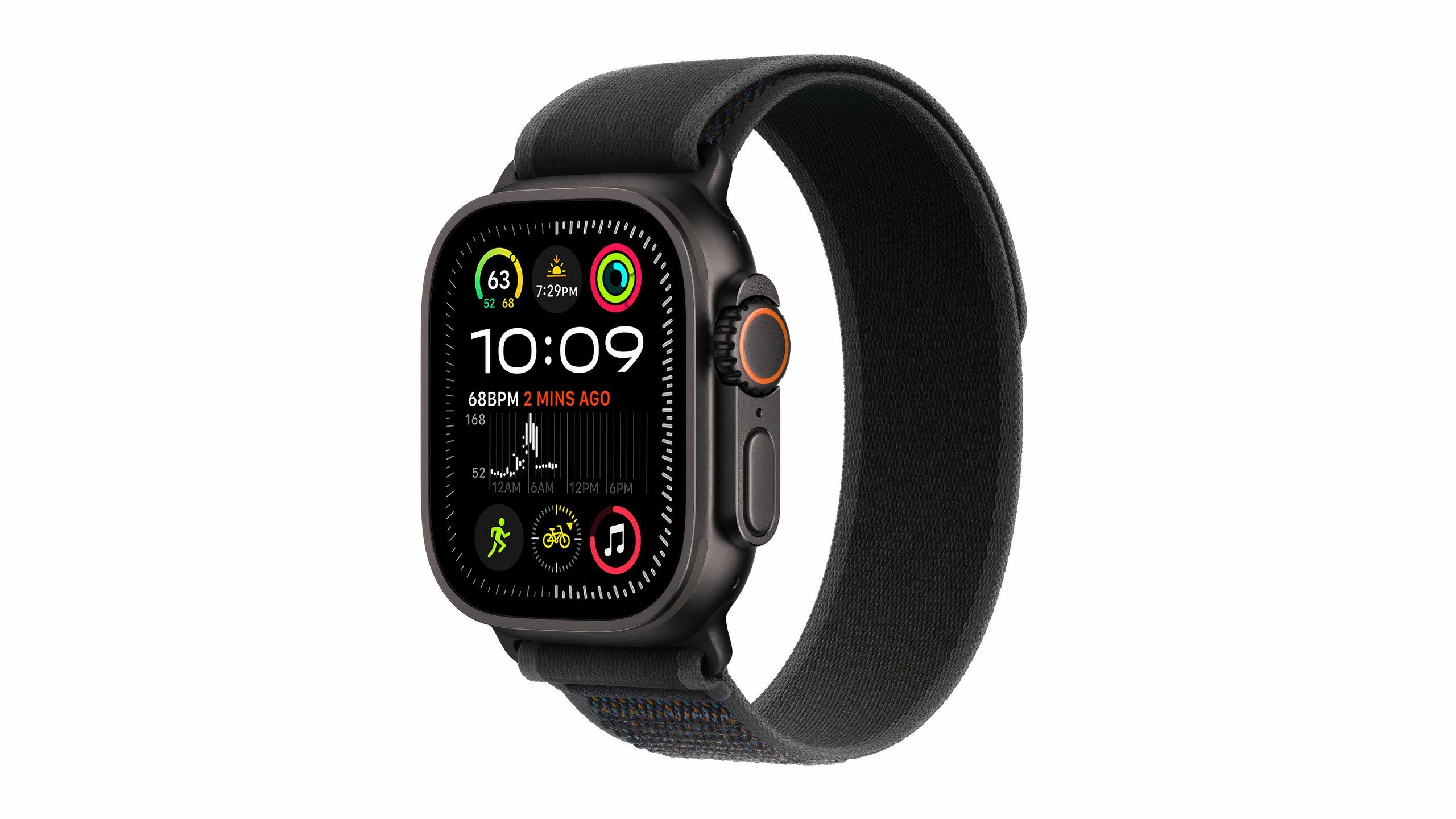
Apple Watch Ultra 2
The Apple Watch Ultra 2 is the best high-end or “pro” smartwatch because it’s actually designed for demanding athletic and outdoor activities, on top of being a good smartwatch.
Ultimately, unless you’re willing to change operating systems and ecosystems, which smartwatch you buy will be defined by what smartphone you already own. It’s unfortunate these devices aren’t more open and flexible, but they’re essentially viewed as a way to keep you buying new iPhones or Galaxy phones, rather than standalone products in their own right.
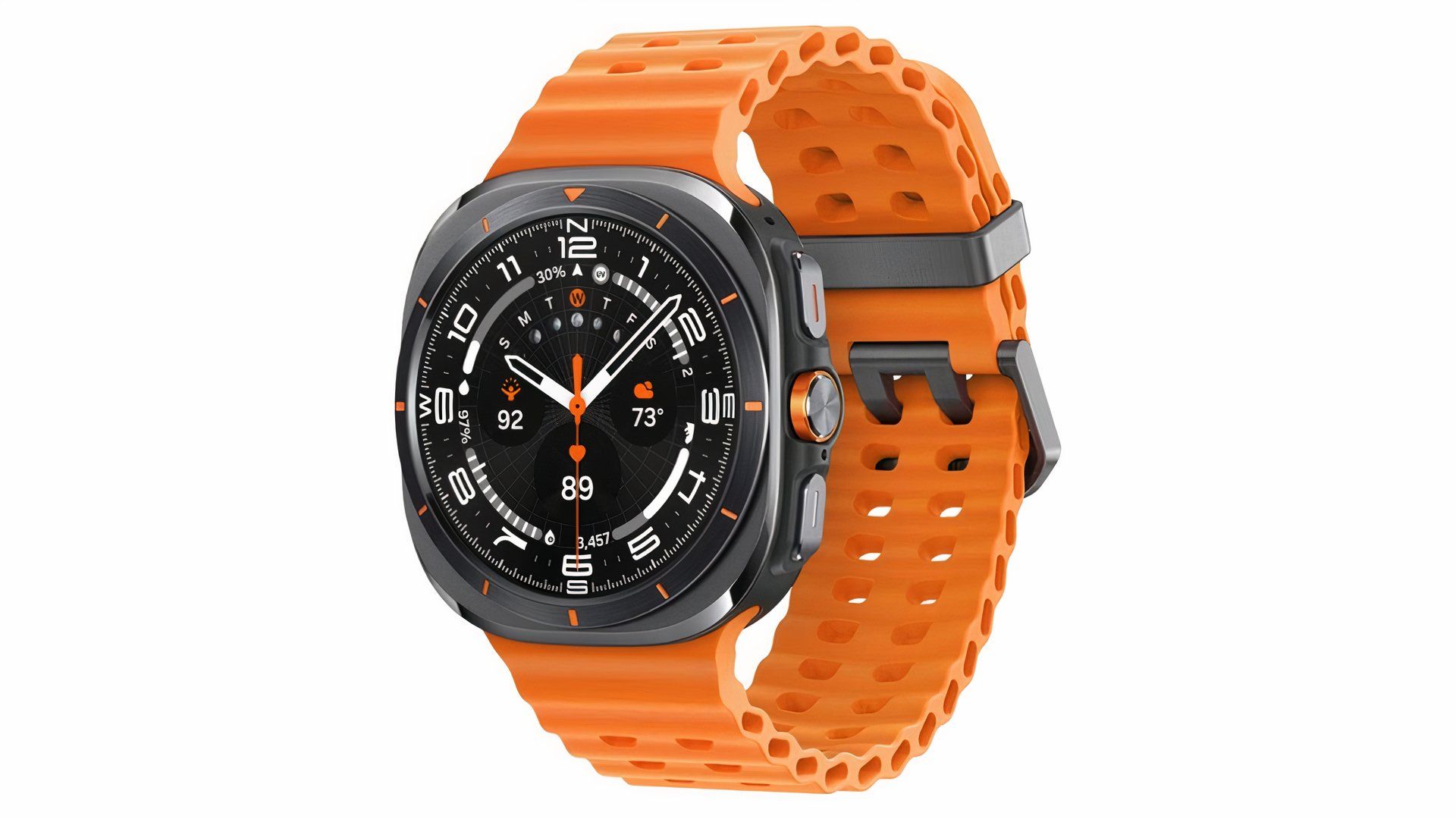
Samsung Galaxy Watch Ultra
The Samsung Galaxy Watch Ultra is better than an entry-level Wear OS smartwatch, but not quite as capable as an Apple Watch Ultra or the Garmin wearables both smartwatches are compared to.
Trending Products

